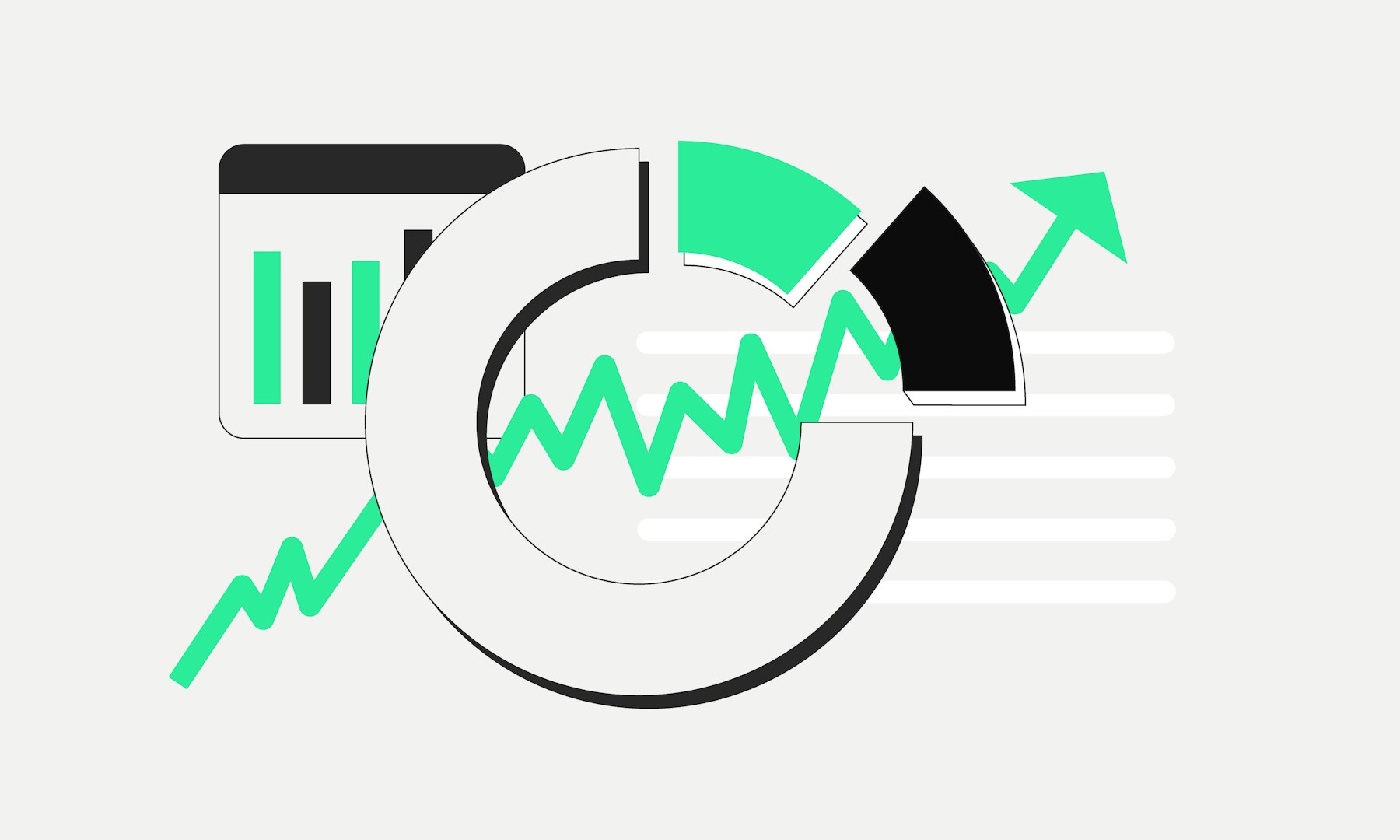Why is the Fear and Greed Index measured?
Primarily, investors and traders of cryptocurrencies or stocks on the stock exchange use the Fear and Greed Index as an indicator to identify market exaggerations. It can provide clues about upcoming corrections or buying opportunities, especially when values reach extreme areas.
In combination with other analytical methods, such as technical analysis, the index can help interpret the crypto or stock market better. It's also useful for risk management, as high greed values may indicate potential overheating, while extreme fear often signals the potential for a market recovery.
How is the Fear and Greed Index calculated?
The Fear and Greed Index summarises various sentiment indicators and displays them on a scale from 0 to 100, where 0 stands for extreme fear and 100 for extreme greed. The calculation is based on the analysis of several market indicators, each of which receives a value between 0 and 100. The average of these values gives the current level of the index.
How often is the Fear and Greed Index calculated?
There are no fixed days or hours for calculating the Fear and Greed Index. Rather, it is calculated immediately as soon as all necessary data is available. This has a major advantage for investors. They receive constantly updated results, allowing them to always stay up to date.
Which factors contribute to the Fear and Greed Index?
Several factors that reflect market sentiment make up the Fear and Greed Index. These include volatility, trading volume, Bitcoin dominance (in cryptocurrencies), and investor behaviour in the options and bond markets. Search trends, social media activity and opinion polls also feed into the calculation.
The data points are weighted and summarised by analysts into a value between 0 and 100. The resulting figure indicates whether the market is currently dominated by fear or greed.
To help you understand better, we've explained the various indicators in detail below.
Current volatility
Volatility describes the range of fluctuation in a market. Strong price movements often indicate uncertainty, while stable phases suggest a calm market mood. The Fear and Greed Index measures volatility using indicators such as the CBOE Volatility Index (VIX) for stocks or Bitcoin's price fluctuations in the crypto market. High volatility pushes the index towards fear, while low volatility suggests greed.
Bitcoin dominance
In the crypto market, Bitcoin dominance plays a major role. It indicates Bitcoin's market share compared to all other cryptocurrencies. Rising Bitcoin dominance often signals a cautious market mood, as investors focus on the "safe haven" of Bitcoin. If dominance falls, risk appetite increases and more traders invest in altcoins, which may indicate a phase of greed in the Fear and Greed Index.
Market trading volume and “market momentum”
Rising trading volumes with increasing prices signal greed, while falling prices with high volume often point to fear. The so-called market momentum analyses the strength of price movements – when many stocks or cryptocurrencies rise continuously, this indicates an optimistic market sentiment.
Stock price strength and stock price breadth
These two indicators relate to the stock market:
Stock price strength measures the ratio of stocks reaching new 52-week highs compared to those hitting 52-week lows, with many new highs signalling market optimism.
Stock price breadth analyses the ratio of rising to falling stocks, and when the number of winning stocks outweighs the losers, the Fear and Greed Index rises towards greed.
Social media sentiment
Social media activity plays a particularly important role in the crypto market. Mentions and discussions about Bitcoin or altcoins on Twitter, Reddit and Telegram feed into the index. High activity with positive comments suggests greed, while negative discussions often signal fear.
Google Trends
Search volumes for terms such as “buy Bitcoin” or “stock market crash” provide insight into the behaviour of retail investors. Rising searches for optimistic terms reflect market greed, while increasing queries about hedging strategies or crash forecasts indicate fear.
Opinion polls
To measure investor sentiment directly, survey results are included in the index. The surveys are conducted regularly and ask investors about their market expectations for the coming weeks. If optimism dominates, the index rises – if pessimism prevails, it falls.
Junk and bond demand
In the bond market, market sentiment is reflected in the demand for junk bonds. These are high-yield, high-risk bonds. Increased interest in junk bonds indicates risk appetite and therefore greed. Conversely, if investors increasingly choose safe investment-grade bonds over junk bonds, this signals fear.
Safe haven demand
Demand for safe assets like gold, government bonds or the US dollar typically increases in uncertain market phases. Investors flee to these safe havens when they fear a crisis. The Fear and Greed Index takes these developments into account – high demand for safe assets often means rising fear.
Put and call options
The options market also provides insight into market sentiment. The ratio of put to call options shows how many investors are hedging against falling prices. When many market participants buy put options, the index rises towards fear. If call option buying dominates, this signals increasing risk appetite and therefore greed.
How do you interpret the Fear and Greed Index?
The Fear and Greed Index shows prevailing market sentiment on a scale from 0 to 100, with extreme values providing important signals for investors. A low value (0 to 25) signals extreme fear, indicating that investors are pessimistic and possibly selling in panic. A high value (75 to 100) in the Fear and Greed Index points to extreme greed, meaning that investors are overly optimistic and taking on more risk.
Mid-range values between 25 and 50 show a predominantly fearful market mood, while values between 50 and 75 indicate a tendency towards greed. A value around 50 means the market is balanced without extreme emotional swings.
